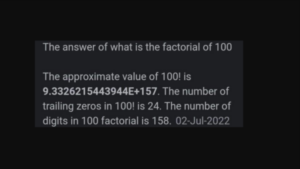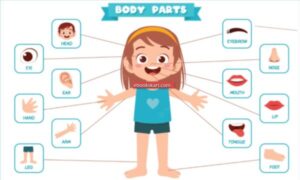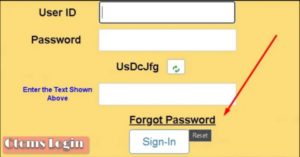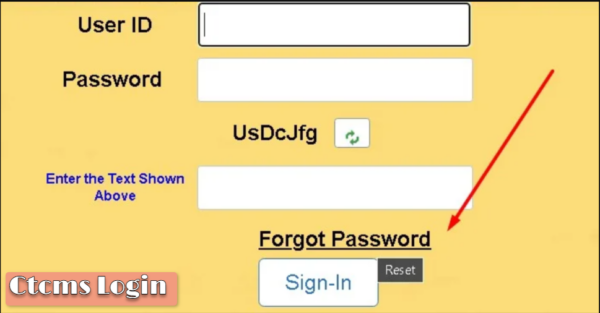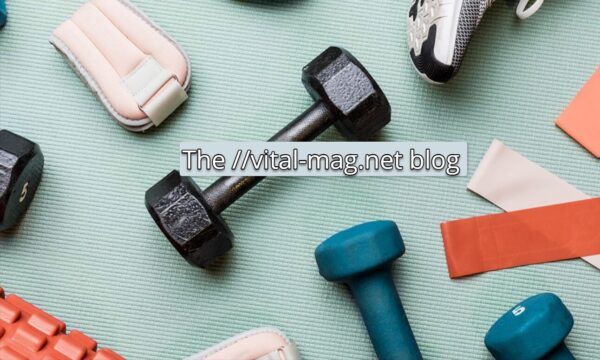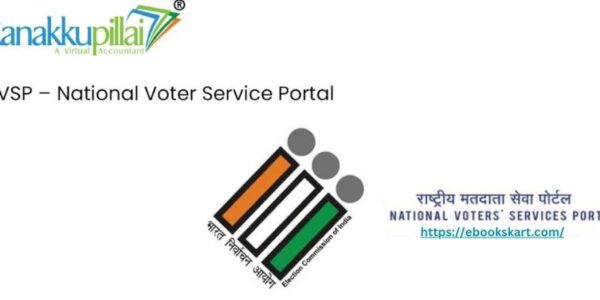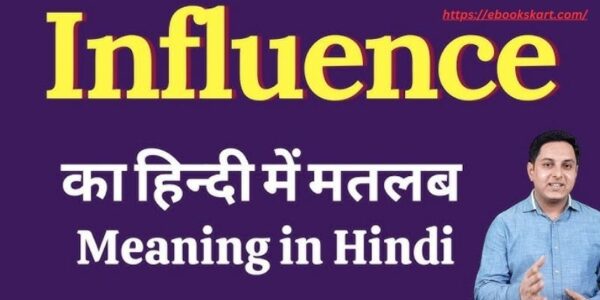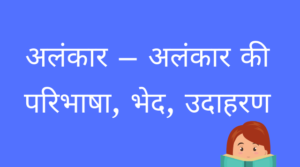Indian Ancient history plays an important role in any competitive exam for government jobs like SSC, NDA, CDS, UPSC, UPPSC and State PSC, etc. You will always find 2-3 questions on Indian ancient history and by reading below questions you can get 3-4 marks easily.
ebookskart.com presents a list of more than 100 most important Indian Ancient history questions with answers to practice and prepare for various competitive exams.
These questions and answers about ancient Indian history are also important for readers of different countries to know more about India, one of the oldest civilizations on the earth with its rich and dynamic cultural and social heritage
100+ Indian Ancient History Questions with Answers
- Ancient Indian history GK questions with answers set-1
- Ancient Indian history GK questions with answers set-2
- Ancient Indian history GK questions with answers set-3
- Ancient Indian history GK questions with answers set-4
Ancient Indian history GK questions and answers set-1 (1-25)
Q.1: The port of Mamallapuram was constructed during the reign of which of the following kings?
A. Narasimhavarman II
B. Parameshvaraman I
C. Mahendravarman I
D. Narsimhavarman I
Ans: D. Narsimhavarman I
Q.2: Which of the following kings succeeded Nandivarman II?
A. Nandivarman III
B. Virakurcha
C. Dantivarman
D. Aparajita
Ans: C. Dantivarman
Q.3: Which of the following succeeded Dantivarman?
A. Paramesdhvaraman II
B. Nandivarman III
C. Aparajita
D. None of the above
Ans: B. Nandivarman III
Q.4. The exclusive assembly of Brahmans/gatherings of the adult male members in the agraharas in the Chola empire was referred to as?
A. Uranas
B. Sabha
C. Samiti
D. None of the above
Ans: B. Sabha
Q.5: Jayantavarman was succeeded by which of the following kings?
A. Maravarman Arikesari Parankusan
B. Maravarman Rajasimha I
C. Koccadiyan Ranadhira
D. Varguna I
Ans: A. Maravarman Arikesari Parankusan
Q.6: Agattiyam’ was written by which of the following?
A. Tolkappiyar
B. Sattanar
C. Senguttuvan
D. Agathiyar
Ans: D. Agathiyar
Q.7: Which of the following was the foremost port of the Cheras?
A. Sopara
B. Muziris
C. Arikamedu
D. Tamralipti
Ans: B. Muziris
Q.8: Which of the following animals was unknown in Indus Valley Civilization?
A. Lion
B. Bull
C. Elephant
D. Horse
Ans: A. Lion
Q.9: A lot of beads were discovered from Mohenjo-Daro in Indus Valley Civilization. Most of these beads were made of _?
A. Terracota
B. Jasper
C. Lapis
D. Steatite
Ans: D. Steatite
Q.10: The famous Bull-seal was found at which Indus Valley Civilization site?
A. Harappa
B. Mohenjodero
C. Lothal
D. Chanhudaro
Ans: A. Harappa
Q.11: Read the following statements:
1. During the Gupta period, the social position of the Shudras was comparatively better.
2. Shudras were allowed to listen to the epics and Puranas.
Choose the correct answer from the codes given below:
A. Only 1
B. Only 2
C. Both
D. Neither 1 nor 2
Ans: C. Both
Q.12: During the Vedic Period, the term ‘Charmamna’ was used for:
A. Barber
B. Carpenter
C. Tanner
D. Goldsmith
Ans: C. Tanner
Q.13: In reference to Jain Tirthankara, Lion represents …
A. Naminatha
B. Neminatha
C. Parshvanatha
D. Mahavira
Ans: D. Mahavira
Q.15: Lord Mahadeva temple located at Ittogi is a typical example of …
A. Nagara style
B. Vasara style
C. Dravida style
D. Amravati art
Ans: B. Vasara style
Q.16: In reference to Sangam period, the term Nagars represent …
A. The farmers
B. The hill people who gather hill products
C. The people in charge of border security
D. The people who thrive on forests
Ans: C. The people in charge of border security
Q.17: Who among the following had adopted the title of ‘Adivaraha?’
A. Dharmpala
B. Bhoja
C. Dantidurga
D. Nagapala
Ans: B. Bhoja
Q.18: Who among the following emperors commenced the title of ‘Maharajadhiraja?’
A. Chandragupta I
B. Samudragupta
C. Asoka
D. Harshavardhan
Ans: A. Chandragupta I
Q.19: In reference to Five faces of Shiva, Aghora represents:
A. Western direction
B. Northern direction
C. Eastern direction
D. Southern direction
Ans: D. Sout
Q.20: The evidence of burying dogs in the graves of their master was found in ……
A. Burzahom
B. Mehrgarh
C. Lothal
D. Kalibangan
Ans: A. Burzahom
Q.21: Which one of the following statements is wrong?
A. A number of signs of the Harappan script is known to be between 400 and 600, of which about 40 or 60 are basic and the rest are their variants.
B. The variants are formed by adding different accents, inflexions, or other letters to the former.
C. Mujumdar has contended that he has deciphered Harappan script.
D. Harappan script is regarded as pictographic.
Ans: C. Mujumdar has contended that he has deciphered Harappan script.
Q.22: In reference to the Gupta period, Bhaga refers?
A. King’s customary share in total agricultural produce
B. Villagers periodically supplied flowers, fruits, etc. to king
C. Additional tax
D. An extra tax charged over and above the land revenue.
Ans: A – King’s customary share in total agricultural produce
Q.23: In reference to ancient literature, the meaning of Mimamsa is …
A. Logical view based on dialectics
B. Experimental view based on sensorial experience
C. Ritualistic view based on sacred texts
D. Speculative view based on metaphysics
Ans: C. Ritualistic view based on sacred texts
Q.24: In reference to Vedic period, the term ‘Sita’ refers:
A. Plough
B. Furrows
C. Sickle
D. Axe
Ans: B. Furrows
Q.25: In reference to ancient India, Kaliyuga refers …
A. Golden age
B. Silver age
C. Copper age
D. Iron age
Ans: D. Iron age
Ancient Indian history GK questions with answers set-2 (26-50)
Q.26. The Vedic name Purushni refers to ……………………… river.
A. Jhelum
B. Ravi
C. Satluj
D. Chenab
Ans: B. Ravi
Q.27. Who among the following was not a Pratihara king?
A. Vatsaraja
B. Mihira Bhoja
C. Mahipala
D. Mangalesa
Ans: D. Mangalesa
Q.28. Asoka’s Minor Pillar Edicts were not found at …
A. Sanchi
B. Sarnath
C. Rummindei
D. Allahabad
Ans: D. Allahabad
Q.29. Who among the following were contemporaries of Kanishka?
A. Kamban, Banabhatta, Asvagosha
B. Nagarjuna, Asvagosha, Vasumitra
C. Asvagosha, Kalidasa, Banabhatta
D. Kalidasa, Kamban, Vasumitra
Ans: B. Nagarjuna, Asvagosha, Vasumitra
Q.30. The caste system of India was created for:
A. immobility of labour
B. recognition of the dignity of labour
C. economic uplift
D. occupational division of labour
Ans: D. occupational division of labour
Q.31. In Mohanja Daro, the largest building is:
A. the great bath
B. a granary
C. the Pillared Hall
D. a two storeyed house
Ans: B. a granary
Q.32. The striking feature of the Indus Valley Civilization was:
A. Urban Civilization
B. Agrarian Civilization
C. Mesolithic Civilization
D. Paleolithic Civilization
Ans: A. Urban Civilization
Q.33. After Alexander’s death the Eastern part of his empire came under:
A. Seleucus Nicator
B. Menander
C. Rudradaman
D. Kanishka
Ans: A. Seleucus Nicator
Q.34. Seleucus Nicator was defeated by:
A. Asoka
B. Chandragupta Maurya
C. Bindu Sara
D. Brihadratha
Ans: B. Chandragupta Maurya
Q.35. Alexander and Porus fought a battle at:
A. Hydaspes
B. Jhelum
C. Panipat
D. Tarain
Ans: A. Hydaspes
Q.36. Worship of Mother Goddess was associated with:
A. Aryan Civilization
B. Mediterranean Civilization
C. Indus Valley Civilization
D. Later Vedic Civilization
Ans: C. Indus Valley Civilization
Q.37. Hiuen Tsang visited India during the reign of:
A. Chandragupta I
B. Chandragupta II
C. Harshavardhana
D. Rudradaman
Ans: C. Harshavardhana
Q.38. The Greek ambassador sent to Chandragupta Maurya’s Court was:
A. Kautilya
B. Seleucus Nicator
C. Megasthenes
D. Justin
Ans: C. Megasthenes
Q.39. Fa-hien visited India during the reign of:
A. Chandragupta II
B. Samudragupta
C. Ramagupta
D. Kumaragupta
Ans: A. Chandragupta II
Q.40. The first metal used by man was:
A. Aluminium
B. Copper
C. Iron
D. Silver
Ans: B. Copper
Q.41. The ‘Kannauj assembly’ organised by Harsha was held in honour of:
A. Fa-Hien
B. Itsing
C. Hieun-Tsang
D. Megasthenes
Ans: C. Hieun-Tsang
Q.42. Which of the following statements about the Guptas is not true?
A. They ruled mainly over parts of north and central India.
B. Kingship was hereditary and the throne always went to the eldest son.
C. The judicial system was far more developed than in earlier times.
D. Land taxes increased and taxes on trade and commerce decreased.
Ans: B. Kingship was hereditary and the throne always went to the eldest son.
Q.43. The monk who influenced Ashoka to embrace Buddhism was:
A. Vishnu Gupta
B. Upagupta
C. Brahma Gupta
D. Brihadratha
Ans: B. Upagupta
Q.44. Which event brought about a profound change in Ashoka’s administrative policy?
A. The third Buddhist Council
B. The Kalinga War
C. His embracing of Buddhism
D. His sending of missionary to Ceylon
Ans: B. The Kalinga War
Q.45. Who started the Saka Era and when?
A. Kadphises in 58 BC
B. Rudradaman I in AD 78
C. Vikramaditya in 58 BC
D. Kanishka in AD 78
Ans: D. Kanishka in AD 78
Q.46. The people of the Indus Valley Civilization usually built their houses of:
A. Pucca bricks
B. Stone
C. Wood
D. All of the above
Ans: A. Pucca bricks
Q.47. During which Gupta King’s reign did the Chinese traveller Fa-hien visit India?
A. Chandra Gupta I
B. Samudra Gupta
C. Chandra Gupta II
D. Kumara Gupta
Ans: C. Chandra Gupta II
Q.48. The Kadamba King Mayurasharma ruled from Banavasi during which of the following periods?
A. A.D. 330 to 345
B. A.D. 335 to 355
C. A.D. 345 to 365
D. None of the above
Ans: . A.D. 345 to 365
Q.49. Which of the following statements are correct regarding guilds during the early medieval period?
1. Only mercantile guilds functioned during this period.
2. They had the right of making by-laws which were binding on their members.
Select the correct option from the codes given below:
A. Only 1
B. Only 2
C. Both 1 & 2
D. Neither 1 & 2
Ans: B. Only 2
Q.50. Which of the following Dramas were written by Rajasekhara?
1. Viddhasalabhanjika
2. Karpuramanjari
3. Mahaviracharita
4. Balaramayana,
Select the correct option from the codes given below:
A. Only 1 & 2
B. Only 1, 3 & 4
C. Only 2 & 3
D. 1, 2, 3, & 4
Ans: D. 1, 2, 3, & 4
Ancient Indian history GK questions with answers set-3 (51-75)
Q.51. Who was the author of Nyayamanjari?
Ans: Jayanta
Note: The philosophical treatise Nyayamanjari was written by 9th Century CE poet and philosopher Jayanta. He belonged to Kashmir and was a philosopher of Nyaya school of Hindu philosophy.
Q.52. Which king founded the Rashtrakuta kingdom?
Ans: Dantidurga
Note: Dantidurga ascended to the throne in c.733 CE and ruled from c. 733 to 756 CE. He was a Feudatory of Kirtivarman II.
Q.53. Who helped Pallava King Nandivarmana to regain Kanchi from the Chalukyas?
Ans: Dantidurga
Note: The Pallava King Nandivarmana was father in law of Dantidurga, so Dantidurga helped Nandivarmana to regain Kanchi from the Chalukyas.
Q.54. Gautam Buddha belongs to which clan?
Ans: Shakya
Note: Gautam Buddha’s childhood name was Siddhartha Gautama. His father King Suddhodana was leader of the Shakya clan.
Q.55. Tell the one most essential feature of the Indus Valley Civilisation?
Ans: Organised city life.
Note: Indus Valley Civilisation cities contained well-organized wastewater drainage systems, possibly even public granaries, baths and trash collection systems.
Q.56. The Vedas were circulated in which known form?
Ans: Shruti.
Note: Shruti is a synonym for ‘Hearing’. In earlier time people used to remember the Vedas by listening only.
Q.57. Whose achievements are recorded in the Allahabad Pillar inscription?
Ans: Samudra Gupta
Note: Allahabad Pillar inscription is written by the poet and minister, Harishena in the later version of Brahmi, a more refined Gupta script.
Q.58. What does ‘Buddha’ means?
Ans: The Enlightened One.
Note: The term Buddha is related to the one who has attained Bodhi. Bodhi means wisdom, an ideal state of intellectual and ethical perfection which can be achieved by man through purely human means.
Q.59. Which civilization dockyards were found on ‘Lothal’ site?
Ans: Indus Valley
Note: Lothal, located in the Bhal region of Gujarāt, was one of the southernmost cities of the ancient Indus Valley Civilization. The Construction of the city began around 2200 BCE.
Q.60. In which period Ardhanarishvara form of Shiva was created?
Ans: Gupta period
Note: The Ardhanarishvara form of Shiva where the deity is represented as half male and half female was created by the Gupta artists. Ek-Mukhi and Chaturmukhi Shiva-Lingas were also introduced by the Gupta artists.
Q.61. Which king extended the Vakataka empire southwards into Vidarbha?
Ans: Pravarasena
Note: Pravarasena extended the Vakataka empire southwards into Vidarbha and adjoining areas of the Deccan.
Q.62. Which king was the successor of Ishanavarmana?
Ans: Sarvavarmana
Q.63. Pushyabhutis were originally feudatories of……..?
Ans: Guptas
Q.64: Which of the following statements are correct regarding the early medieval period?
1. Caste system declined.
2. Brahamanas were granted villages free from taxes.
3. All the taxes which were previously collected by the king from the villages, were now transferred to the Brahmanas.
Select the correct option from the codes given below:
A. Only 1
B. Only 2
C. Only 2 & 3
D. 1, 2 & 3
Ans: C [Only 2 & 3]
Q.65. Who was the author of Dhvanyolaka?
Ans: Anandavardhana
Q.66. Name the three Dramas written by Bhavabhuti?
Ans: Malatimadhava, Mahaviracharita, UttaraRamacharita
Q.67. Which king revived the Nalanda monastery?
Ans: Gopala
Q.68. Who was the ruler of the kingdom between the rivers Jhelum and Chenab?
Ans: King Porus
Q.69. 17. Which of the following statements is/ are correct?
I. In 326 BC Alexander invaded India.
II. Ambhi (king of TaxilA. welcomed Alexander and his men
III. Alexander died in 332 BC
Code:
A. All are correct
B. Only I, III
C. Only I, II
D. II, III
Ans: C. Only I, II
Q.70. Who was the main male God worshipped by Indus people?
Ans: Lord Vishnu
Check This: बच्चों के लिए जनरल नॉलेज के 100+ सवाल और उनके उत्तर
Q.71. Where were the hymns of Rig-Veda composed?
Ans: Punjab
Q.72. Name the three gods worshiped during Early Vedic Civilization?
Ans: Varuna, Indra, Surya
Q.73. Who was the first Indian ruler who had territory outside India?
Ans: Kanishka
Q.74. Upanishads are books on…….?
Ans: Philosophy
Q.75. Which king started the organization of the Kumbh fair at Allahabad?
Ans: Harshavardhana
Indian Ancient history questions with answers set-4 (76-100)
Q.76. 5. Which among the following is not correct?
A. The capital of pandyas was Madurai
B. The capital of Cheras was Vanchi
C. Capital of the Videha Kingdom – Mithila
D. Capital of Gahadwal Dynasty – Kannauj
Ans: C. Capital of the Videha Kingdom – Mithila
Q.77. King Pulakesin II belonged to which Dynasty?
Ans: Chalukyas
Q.78. Among the following: who was the earliest visitor to India?
A. Alberuni
B. Fa-Hien
C. Hiuen Tsang
D. Megasthenes
Ans: D. Megasthenes
Q.79. ‘Mushika Vamsha’ written by Atula in the eleventh century gives an account of the dynasty which ruled a part of a modern Indian state. Which state is this?
Ans: Kerala
Q.80. Which ruler checked Harshavardhana’s expedition in South India?
Ans: Pulakesin II
Q.81. Where did Gautam Buddha give his first sermon?
Ans: Sarnath
Q.82. Gandhara School of Art was associated with which dynasties?
Ans: Kushanas
Q.83. Harihara Raya I who ruled the Vijayanagara Empire for the period 1336-1356 belonged to which dynasty?
Ans: Sangama Dynasty
Q.84. Which dynasty was founded by Bimbisara?
Ans: Haryanka
Q.85. Which one of the following was the capital of Kosala?
A. Sravasti
B. Shuktimati
C. Kaushambi
D. Indraprastha
Ans: A. Sravasti
Q.86. For which period did Harihara Raya II of Sangma dynasty ruled the Vijayanagara Empire?
Ans: 1377-1404
Q.87. Tuluva Narasa who ruled the Vijayanagara Empire for the period 1491-1503 belonged to which dynasty?
Ans: Tuluva Dynasty
Q.88. During the Gupta Empire, the term “UPARIKARA” was used for______?
Ans: An extra tax levied on all subjects.
Q.89. Which of the following kings had lucrative trade with China during the medieval period?
A. Chola kings
B. Chera kings
C. Pandya kings
D. Rashtrakutas kings
Ans: Chola kings
Q.89. Which of the following ruled in southern Karnataka in 4th century A.D. and were contemporary of Pallavas?
A. Kadambas
B. Gangas
C. Cheras
D. Kalabhras
Ans: (B) Gangas
Q.90. Which of the following founded their rule in northern Karnataka and the Konkan in the fourth century A.D.?
A. Vakatakas
B. Ikshvakus
C. Kadambas
D. Kalabhras
Ans: C [Kadambas]
Q.91. ‘Bull’ in Buddhism is associated with which event of Buddha’s life?
Ans: Birth
Q.92. From which of the following Upanishads the words ‘Satyameva Jayate’ inscribed in Devanagari Script below the abacus of the State Emblem are:
A. Prashna
B. Mundaka
C. Mandukya
D. Ishavasya
Ans: B. Mundaka
Q.93. Which was the only Indus city without a citadel?
Ans: Chanhu Daro
Q.94. Who is the excavator of Harappa site?
Ans: Daya ram sahni
Q.95. Which one of the following items was collected only in case under the Mauryas?
A. Kara
B. Bhaga
C. Pranaya
D. Hiranya
Ans: C. Pranaya
Q.96. What is the local name of Mohenjodaro?
Ans: Mould of the dead
Q.97. Who were the immediate successors of the Mauryas in Magadha?
Ans: Sungas
Q.98. In the Vedic age, who was the head of “Grama”?
Ans: Gramini
Q.99. Which was the only Indus site with an artificial brick dockyard?
Ans: Lothal
Q.100. The words “Satyameva Jayate” in the State Emblem of India were taken from:
Ans: Upanishads
If there is any wrong answer tell us in comment section, we will update it immediately This list of 100 Indian Ancient History Questions with Answers is a part of Indian History quiz with 10000+ questions on our app. Download the app to increase your general knowledge.

